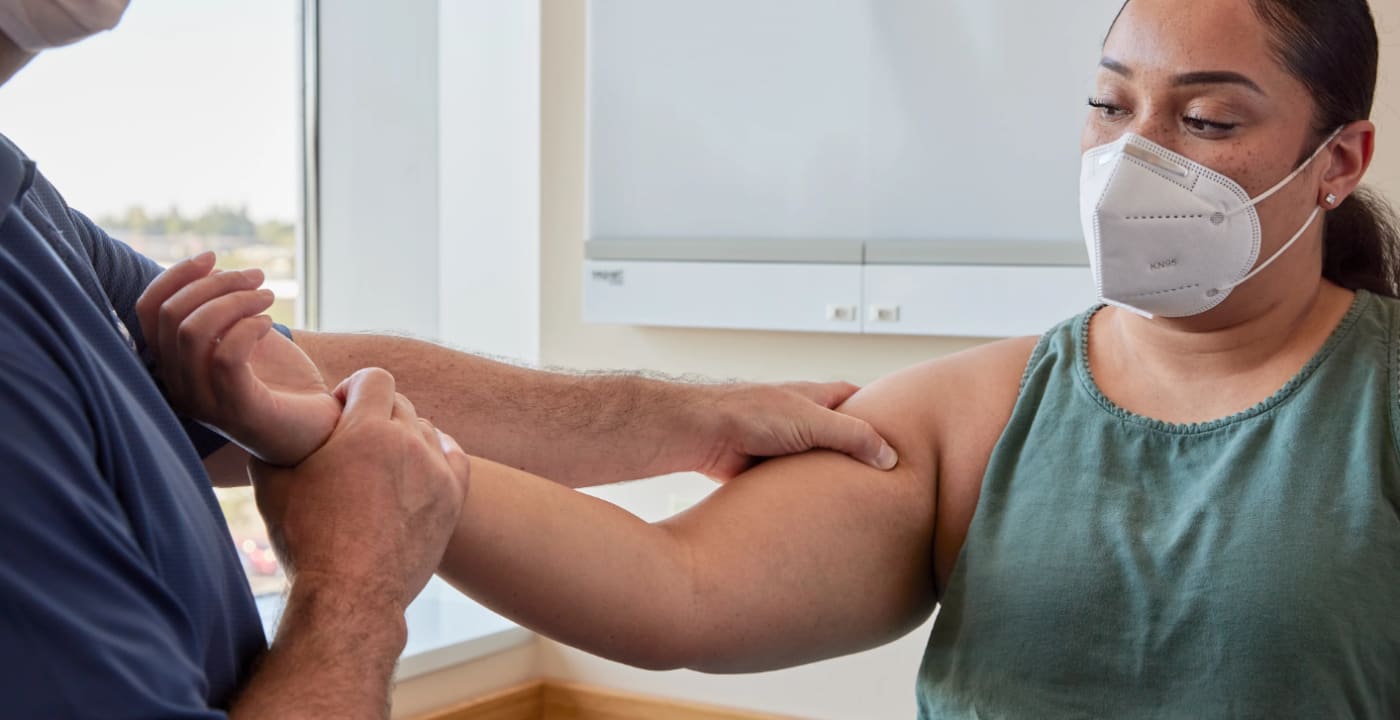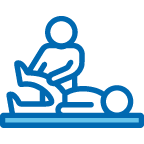How to treat rotator cuff pain and injuries

Whether it’s chopping wood in October, getting on the roof to string lights in December, firing up the lawn mower in May or throwing a softball at the company picnic in July, rotator cuff injuries are an all-season hazard, says MultiCare orthopedic surgeon Rufus Van Dyke, MD.
“Where people seem to get into trouble is performing tasks they’re not fully comfortable doing or where they’re not fully in control of their body,” says Dr. Van Dyke. “Doing an activity that is strenuous you haven’t done for a long time, [such as] using a pull-start on a mower for the first time in spring, is a common story.”
The good news: Treatment for rotator cuff injuries has improved significantly in recent years, so despite their reputation for being difficult to repair, you don’t have to live with pain and reduced mobility.
Initially, most rotator cuff injuries can be self-managed with rest, ice, gentle stretching and anti-inflammatory medications. Unless you’ve suffered an acute injury to your shoulder, you can safely try at-home care to start.
But if that doesn’t alleviate your pain within a few weeks, it’s best to see your doctor or other health care provider before the injury becomes more difficult or even impossible to repair.
“I wouldn’t go six months or a year with pain without seeing my doctor,” Dr. Van Dyke says.
Your primary care doctor can evaluate your shoulder and often prescribe physical therapy — typically a course of six to eight weeks would be reasonable, he says.
If the pain isn’t significantly relieved by then, “a referral to an orthopedic surgeon is appropriate,” Dr. Van Dyke adds.
Treatment for rotator cuff injuries
Rotator cuff disease includes strains, wear and tear associated with aging, and acute traumatic injury like falls or car accidents. The extent of the injury can vary from microscopic tearing (a strain) to a tear that goes through a significant width or even the entire tendon.
“That can create a lot of different scenarios that might need different types of treatment,” Dr. Van Dyke says.
For age-related degenerative changes or minor repetitive use injuries, “sometimes it can be as straightforward as a trial of rest or activity modification along with some stretches,” he says. “If it’s an overuse injury or you have a job that requires a lot of repetitive motion that is arm-intensive, changing how you’re doing certain activities or taking a break can be enough to take care of symptoms and resolve the issue.”
Sometimes corticosteroid injections can help with pain or even help give your surgeon diagnostic clues to the root of your injury.
“It’s always important to consider it for the right reasons and not just jump in,” Dr. Van Dyke advises. “[Injections] don’t help with healing a rotator cuff tear or resolving a mechanical issue in the shoulder.”
Multiple injections over time can also weaken the tissues around the shoulder, so simply repeating them once the effect wears off is not a sustainable solution.
For a tear, sometimes the gap is just too wide for the tendon to naturally knit itself back together, no matter how long you rest. In those cases, surgery can bring the edges back together with “heavy duty” sutures, or in some cases re-fasten the tendon to its original attachment site on the bone with anchors.
These days, most surgeries for rotator cuff tears are done arthroscopically, or in a minimally invasive procedure. In cases where accessing the tear arthroscopically is difficult, open surgery remains an option.
But don’t live with the pain for months or years before seeking help, says Dr. Van Dyke.
“If you wait too long, it can change your prognosis even with surgical intervention,” he says. “It may change from something I’m able to clean up and smooth out to something that needs to be repaired to something that’s not repairable.”
If the cuff can’t be repaired, open-surgery shoulder replacements can bypass the rotator cuff. It’s a significantly more invasive procedure than arthroscopy.
“But it allows someone to raise their arm over their head and live life without rotator cuff pain,” Dr. Van Dyke says.
Shoulder replacements can usually restore overhead arm function in all but the most severe cases. Even though some patients feel hopeless about their near-functionless shoulder before surgery, “it can still be a great option for those folks,” he says. “They’re in a challenging situation and the gains you make with shoulder replacement are quite profound.”
If you’re suffering from shoulder pain, Dr. Van Dyke says the most important thing to know is that there is almost certainly medical help that can improve your quality of life.
“It’s not a situation where typically someone has to live with the pain forever and just move on with their life,” he says. “There are a lot of interventions that can really improve people’s shoulder function and reduce their symptoms. Sometimes ignoring those symptoms for months or years can lead to more limited options for the treatments that are available for them.”
Take our personalized Joint Pain Assessment
Rate your joint health and learn about what steps you can take to address joint pain by selecting your region below:
Puget Sound region
Spokane region
Learn more about MultiCare Orthopedics & Sports Medicine.





